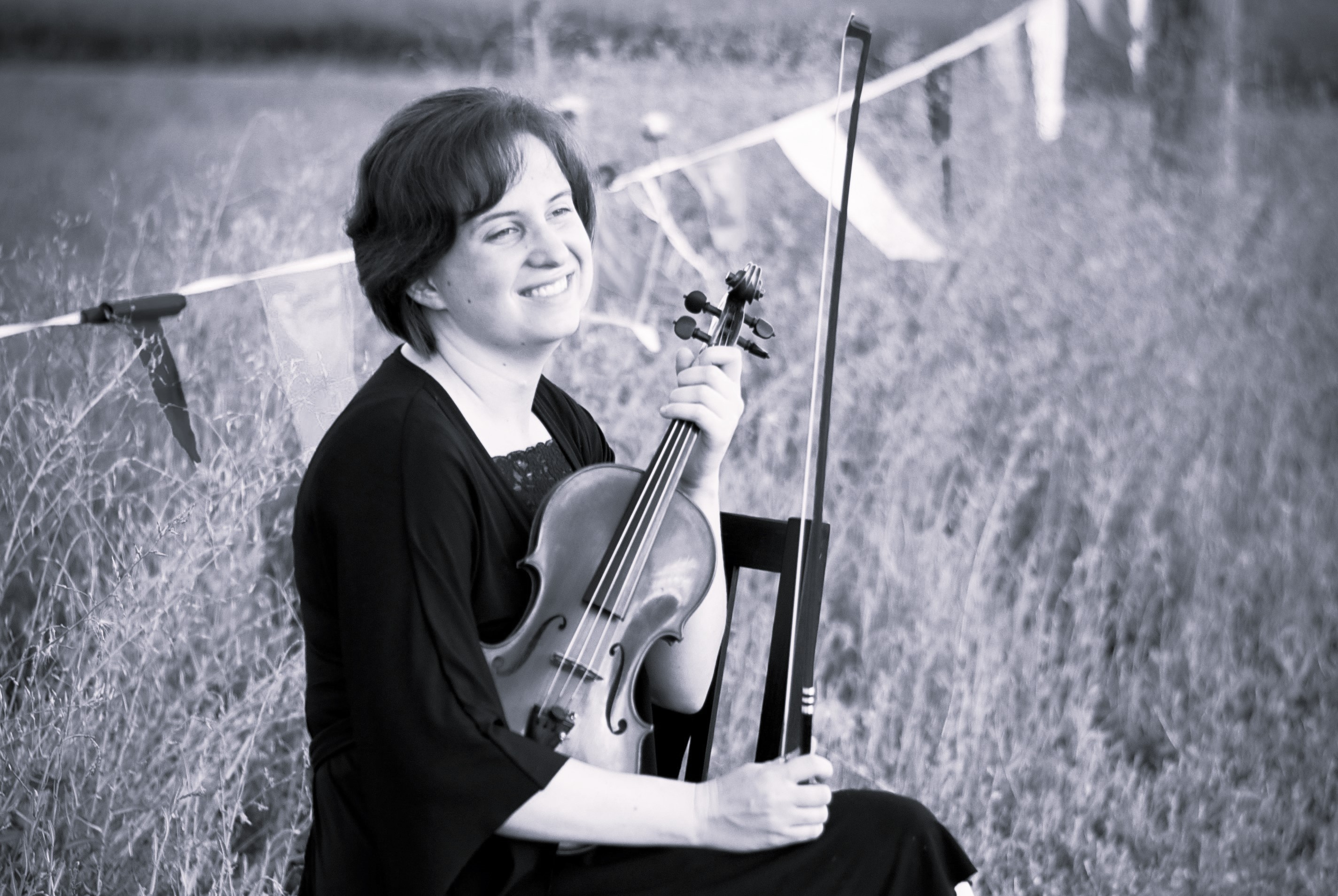In answer to the question, "Should I teach in the schools?"
I write this also to increase parent awareness and appreciation for those who choose this important profession. I will forbear from telling you some of the worst "horror stories" and start with what you are typically facing as an orchestra teacher of fifth- and sixth-grade students. Please note that this does not refer to teaching music during the current challenges presented by COVID-19. My stories are based on my experience teaching in six school districts, covering two states, in both before- and after-school programs and part time during the school day, during 2002-2016.
You can make a good hourly wage teaching beginning orchestra in the public schools, even without a college degree"”usually $20/hour. But get ready for one of the most challenging jobs in existence. You're in the trenches. Not only are you maintaining classroom discipline with up to 35 kids at a time (if you did a good job recruiting), you're doing it with an instrument in their hands they know next-to-nothing about. Sometimes you don't feel you know either, but that's another story.
You're tuning their instruments for up to fifteen minutes at the beginning of a 45-minute class, because the kids are too afraid to break a string and the parents don't want to pay for any new strings. And those $50 violins from Amazon never stay in tune for even five minutes. You try to recruit parent volunteers to help, to no avail. I actually lost a job once because I "took too much time tuning." But string players know you have to learn to play on an instrument that is in tune!
You're teaching the kids how to hold their instrument, make decent sounds, follow a conductor, and read notes on a page, and do it all at the same time, multiplied by 35. Then you have the kids that actually practice and are bored in class and the ones that still haven't learned the names of their strings by third term and when you find that out, you wonder if you should give up the profession right then and there, you are so incredulous.
You don't typically get a nice music room either. I've taught in portables, art classrooms, math classrooms, gyms, on stage, in cafeterias, etc. You think, why is that a big deal? Well, you don't usually have access to a key to the portable, so if the regular teacher forgets to leave it unlocked, you're running all over the school trying to find a custodian before your students can even get inside with their cold instruments. Despite your best efforts, you have sixth grade boys getting into the art supplies in an art room, kids pushing desks around in the math classroom, kids kicking balls and other equipment around the gym next to expensive instruments with their voices echoing, kids playing in the curtains on stage, or lunch ladies clanging pots and pans during class in the cafeteria.
Then there's the added responsibility of managing chairs and fixing wobbly music stands, both in class and before and afterwards. There goes your fifteen minutes of prep time . . . Since you can't hang posters on the walls, you get creative with white boards (and it helps to have your own set of dry erase markers you buy and bring each day) and homemade flash cards. As far as a music budget goes, try $25 for the entire year--if you're lucky, thanks to the PTA. (Hey, I was able to buy a CD player! It helped!)
If you have surgery and the doctor says you shouldn't get out of bed for two weeks, forget it. You'll be back teaching after a few days. Why? Because if you teach during the school day, it's probably during the other schoolteachers' prep period. And because no one else can do your job. Despite the pain, you're on your own, even if it means hobbling in on crutches, trying not to drop your instrument, and then sitting to teach with your broken leg propped up on a chair. Thank goodness the kids took pity and were remarkably well-behaved that week.
One time, I accidentally buried a cheap steel string six millimeters deep in my thumb and had to rush out of the room to find something to stop the bleeding, leaving the kids behind for five nerve-wracking minutes, heart pounding as I was sure I was going to get fired if the kids didn't die first. (If only I had known then to carry band-aids in my purse!) Novice teachers, please note: steel strings for orchestra instruments should never be manufactured, let alone used. They really need to be aluminum wound. The only exception, of course, is the violin E string.
You have all the regular problems of bad language and disrespect that a regular classroom teacher has. But now you've got kids having sword fights with bows on top of that, even while you're standing there looking at them, others tripping over cellos, many playing over you while you're talking"”honestly, it's a miracle they actually learn anything.
But they do! In fact, when I taught a Strings Techniques class as a graduate student to a group of Music Ed majors, I told them about the following experience I had my first year teaching: It was near the end of the school year. We had decided to put on an informal concert at the end of class for some of the other teachers (because it was their prep period and they graciously chose to attend). We were playing our few lines of music all together, and it was sounding pretty good. It was a large group of students. All of a sudden, in the middle of the performance, one of the boys in my class shouts excitedly, "I get it!" I almost started crying from happy surprise. To this day, I have no idea what that student finally understood. But, as I told my undergraduate students that day, "That moment is what kept me in teaching."
Final Thoughts:
I don't remember most of my students' names, but I do remember their smiles. It reminds me that playing good music should always be something to smile about.
You hear a lot of phrases as a teacher. Phrases like, "Fake it "˜til you make it." "They don't care how much you know until they know how much you care." "It takes a certain personality to teach." Some are very helpful, others not so much. In regards to that last one, my favorite perspective came from a fellow teacher who said, "Being a teacher doesn't require a certain personality, but it does require a lot of love."
Teaching in the public schools is truly a labor of love. And sometimes the students really do get it. Now I'm old enough that I've actually played gigs with a former student. He came up and asked me if I used to be Miss Jackson and then told me he had been in one of my very first beginning orchestra classes. I was so pleased that he had stuck with music throughout his life and become so proficient. And that I had an important part to play in that.
Early in my short-lived public school music teaching career (about eight years), I used to fear that I'd be the reason some kid would someday grow up to hate music. (Years later, I ask if that's even a possible scenario.) But at one point, probably a few hundred students later, I had a paradigm shift: I realized I would count myself lucky if because of me, one student grew up to love music!

Cami Shaskin
Violin Blog
About
Updates
Quick Access
Archive
2021
Jan
2022 16 - Welcome to My Blog
23 - Violin Teaching Kits
Feb 06 - Valuable Techniques
07 - From the Top
20 - Violin Jokes
Mar 06 - Singing in Orchestra
13 - Nurtured by Love
21 - Helpful Websites
27 - Unique Case Uses
Apr 10 - All About Tone
24 - Teaching Values
May 02 - Believing Teachers?
29 - Our Quartet
Jun 26 - Violin Bridge Tips
Jul 07 - Clever Violin Memes
20 - Horses and Lions
Aug 04 - Music During Covid
16 - Favorite Music
Sep 12 - Being There
Oct 16 - Sight Reading Tips
Nov 05 - Why It's the Frog
Dec 20 - Bach on the Brain
30 - Impact for Life
Jan
Jul
Aug
Oct
Nov
2023 23 - Tendonitis Helps
Feb 21 - An Old Performance
Mar 23 - Cars3 & Coaching
Apr 29 - Preferred Brands
May 27 - Love: A Calling
JunJul
Aug
08 - Music Opens Doors
SepOct
Nov
27 - Useful Analogies
Dec 28 - A Humorous Anecdote
Jan
Feb
May
Jun
Aug
Oct
Nov
2024Feb
15 - Our Commonality
Mar 10 - Extras
18 - Autopilot
AprMay
Jun
06 - Motivation
JulAug
26 - The Ink
SepOct
Nov
26 - Music Copyright
Dec Jan
Mar
Sep
2025 15 - Fame and Fortune
FebMar
14 - Intermission
Apr 18 - A Day in the Life
May 02 - Oops!
Jun 14 - A Science or an Art?
Jul 15 - A Difficult Post
AugSep
20 - Anxiety Interview
Oct 02 - Sounds of Italy
Nov No posts to display.
Dec No posts to display.
Jan
Feb
Aug
Feb
No posts to display.
Mar No posts to display.
Apr 17 - Bittersweet Moments
May No posts to display.
Jun No posts to display.
JulAug
No posts to display.
Sep No posts to display.
Oct 31 - My Video Series
Nov No posts to display.
Dec No posts to display.
Posts
Beginning Orchestra Teaching
| Love it | Interesting | Inspiring | Want to share |
 |
 |
 |
 |
| 0 | 0 | 0 | 1 |
Like this post? Link back to it later by copying the URL below.
© 2021-2025 All Rights Reserved
This content has been proven to be completely dairy-free, gluten-free, sugar-free, and made from code not treated with rBST. No animals were harmed in the making of this blog. The views presented do not necessarily represent the views of Ms. Shaskin's neighbors, kin, the U.S. government, or a mysterious worldwide network of musicians. Any reproduction, retransmission or reposting of content without crediting the author (basically me) is prohibited. Free Wi-Fi not included. If this is a life-threatening emergency, close your browser and dial 911.



